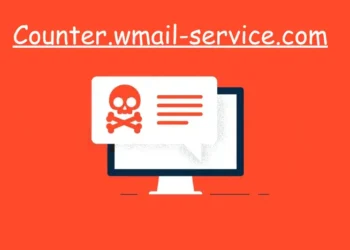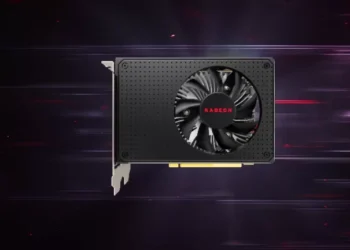In the digital age, there are no excuses for antiquated technology. Small businesses can create cutting-edge websites, manage social media pages, and update databases with business-specific software programs. It’s easier than ever to start a business; almost anyone can launch a new venture with just an idea and a computer. However, as technology advances at lightning speed, staying current with hardware is essential if you want your company to thrive in today’s market. If any of these red flags sound familiar, your business may need an upgrade:
What is Hardware?
Hardware is the physical components of a system, such as computers, servers, routers, and other devices that enable software applications to run. Hardware is often bought in bulk with software licenses, maintenance, and support contracts to save money on the entire investment. If your business is growing steadily, planning for future expansion is essential. Always keep an eye on how many employees you have, how much data you’re storing, and how many customers visit your online store. These are signs that your hardware may not be able to handle the load.
Also Read: What are the Benefits of Hiring a Logistic Servicing Company?
1. Your Computer Is Over 3 Years Old
The latest and greatest Computer may cost a pretty penny upfront, but investing in the newest technology will help you stay relevant in your industry. If you’re still running a computer over three years old, it’s time to upgrade. If your Computer is slower than it used to be, or you’re having trouble working on projects, you need a new system. You’re better off buying a new computer than trying to fix an outdated one. Your Computer is the central hub for all your business’s data. You’re more susceptible to data loss if you don’t have the latest hardware.
2. You Don’t Have a Responsive Website
A responsive website is one site that automatically changes to fit the screen size of any device. If you want people to be able to visit your site from any device, such as a smartphone or a desktop computer, your website needs to be responsive. Most of us have grown accustomed to using mobile devices to browse the web. Almost 50 percent of online traffic is through mobile devices. If you’re running a website on a remote server, you may want to consider upgrading to lc lc fiber patch cables. Adding a remote server is often cheaper than upgrading your current hardware. You’ll want to switch to a star configuration if you currently use a hub-and-spoke design with your remote servers. LC fiber is a type of fiber optic cable that’s used to transmit data across long distances. LC fiber can transfer data faster than traditional fiber optic cables, which is essential if you’re hosting a website on a remote server.
If your site isn’t responsive, the experience may turn off customers. You could even lose business because customers can’t navigate the site properly. A responsive website is like a modern-day closet organizer. It keeps everything neat so you can quickly find what you’re looking for. If your website isn’t responsive, you probably have to manually organize your site every time you add a new product or service. A responsive site automatically makes room for new products.
3. You’ve Outgrown your Current Internet Speed
Speed is everything in today’s society, so keeping your internet connection at its fastest is essential for any business owner. If you’re still enjoying a speedy internet connection, congratulations, you may be one of the lucky few. But if your internet connection is slow, you’re most likely outgrowing your ISP’s bandwidth. If you notice that your website is loading slowly or you’re constantly experiencing outages, you might need to upgrade your internet speed. You don’t want to lose customers because they can’t access your site. If you run an online business and constantly struggle with internet speed, paying for an upgrade won’t be cheap. You might also need a new router if your current one can’t keep up.
Also Read: User Acceptance Testing: Valuable Reasons to Use It
4. Employees Are Constantly Struggling With Equipment
If you notice that your employees are constantly fighting with equipment, it could be a sign that you need to upgrade. It’s common to continually deal with computer issues, especially running an older operating system like Windows XP. If you’ve upgraded your operating system, but employees still have problems, it may be time to invest in newer hardware. The last thing you want is for your team members to spend all their time fixing computers.
5. Your Network is Slowing You Down
The average internet speed in America is ten megabits per second, and that’s considered fast. With many business owners hosting their websites on the same network as their company, slow internet speeds can cause serious problems. If the website that hosts your online store is slowing down, there’s a good chance that your entire business will be affected. If your website is hosted on your server, you may want to consider upgrading to a more powerful server to avoid slowdowns.
Benefits of Updating Your Computer
If your Computer is outdated, you’re in danger of losing data, struggling with slow internet speeds, and constantly dealing with computer issues. It is essential to update hardware because You’ll enjoy faster data processing, improved internet speeds, and more storage space with an updated computer. If you’ve been ignoring these red flags, starting planning for a computer upgrade ASAP is essential. While updating old machines with the latest hardware is possible, buying new computers is often more accessible and cost-effective.
Conclusion
Keeping your business updated is essential, but knowing where to start is not always easy. When you’re struggling to keep up with new technology, it’s easy to get overwhelmed. What is the fastest way to update your Computer? The easiest way is to buy a new computer. But you may also be able to update your Computer. Your choice depends on your computer’s condition and how much you can spend. Look for deals on refurbished computers and find a computer shop that can install the latest operating system and other software on your Computer.








